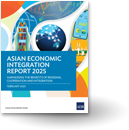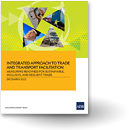Rough Sailing: Navigating Labor Shortages and Remittance Needs in the Pacific
These charts illustrate the need for Pacific countries to expand local livelihood opportunities while balancing between sustaining remittance flows and addressing local labor shortages.
There was a dramatic increase in Pacific migrant workers, with approvals for all categories of work visas to Australia and New Zealand shooting up 2.4 times from 2019 to 2022. Notably, in the first half of 2023 Australian approvals were 14% higher than those for all of 2022.
The increase in migrant workers and motivations from economic difficulties at home boosted remittances to the region, which rose by 23% in 2021. Monthly remittances per worker are almost 1.8 times as much as average earnings at home and fund the costs of daily living, home improvements, and education for many households. Remittances also go towards supporting churches and civic organizations as well as disaster assistance.
However, increased labor migration has also depleted local labor markets, weighing down prospects for sustainable economic recovery in the Pacific. This is a significant challenge, especially in small island economies, where working-age populations are small to begin with, and dwindling pools of skilled labor are hard-pressed to fill the gaps in the workforce.
Scarce labor has become a major concern in the tourism sector, which drives growth in many Pacific economies, as well as in health care. In mid-2022, Samoa, Tonga, and Vanuatu—the Pacific’s three largest exporters of migrant labor—had roughly as many temporary workers in Australia and New Zealand as they had government workers. In these, as well as in many other Pacific countries, the public sector is the largest employer of formal labor.
Labor shortages have also been reported in other critical sectors such as agriculture and construction. As a result, some Pacific countries are bringing in more foreign workers as a stopgap measure to fill these labor shortages.
The expansion in labor mobility schemes, including possible permanent residency and permission for workers’ families to join them abroad, is likely to further tighten local labor supply. This is illustrated by the Cook Islands, whose citizens can migrate freely to New Zealand and Australia with their families and must now depend more on migrant workers to drive its tourism-dependent economy.
There were thus more outward remittances than inward because of local families supporting Cook Islanders living and studying abroad, multigeneration diaspora with few remaining family ties in the country, and migrant workers in the Cook Islands sending money to their home countries. These developments have also been observed in the North Pacific economies, particularly in the Marshall Islands and Palau, whose citizens can migrate freely to the United States.
Remittances will also remain a significant income source for many Pacific economies, but these alone will not ensure sustainable, inclusive, and resilient economic growth. Furthermore, securing remittance flows over the long term will entail sustaining flows of new migrant workers with strong home-country ties. Responses to the challenge posed by increased labor migration must therefore strike a balance between sustaining remittance flows and addressing local labor shortages.
To balance the need to preserve remittance inflows while tackling domestic labor shortages, the following actions should be taken:
Continue to invest in the health, education, and skills of all workers. Stronger and more accessible health care, education, and training systems are significant factors in securing a quality workforce capable of meeting labor demands both at home and abroad.
Tailor domestic skills training programs to meet the needs of local employers. Collaboration with employers, especially those in strategic sectors, and refinement of education and training programs would equip students with skills that are aligned with local business needs.
Provide local employment pathways. Greater certainty in the next steps after graduation, such as those offered by apprenticeships and placement programs, could serve as incentives to pursue training and employment in fields that are important to the local economy.
Support the increased participation of youth and women in local labor markets and labor migration programs. Participants in labor migration programs are often men, and the limited participation of youth and women has contributed to the labor shortages that are now a major concern in the Pacific. Increasing the number of youth and women workers would thus help fill local labor gaps. In addition, promoting women’s participation in labor migration programs could also enable more men to work in their home countries. Women are also more likely to remit more frequently and for longer periods of time, helping to sustain remittance flows.
Overseas employment has long been an attractive and feasible option for Pacific workers, and it became even more so when the COVID-19 pandemic limited economic opportunities at home.
Increased labor migration spurred an increase in remittances, which were instrumental in helping households weather the fallout from the pandemic. However, this has also affected labor markets across the subregion, weighing down prospects for economic recovery.
Given the significance of remittances in many economies, responding to the challenge of local labor shortages must be balanced by maintaining a pipeline of new migrant workers to secure remittance flows to the Pacific.
Original article was published at the ADB Blog and duplicated here with permission from the author. *



